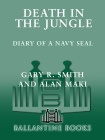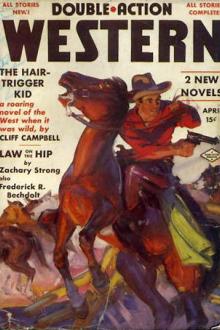Death in the Jungle by Gary Smith (most inspirational books .txt) 📕

Read free book «Death in the Jungle by Gary Smith (most inspirational books .txt) 📕» - read online or download for free at americanlibrarybooks.com
- Author: Gary Smith
Read book online «Death in the Jungle by Gary Smith (most inspirational books .txt) 📕». Author - Gary Smith
It was a moonless night with ideal conditions for clandestine swimmers. All went well until we began swimming back to our rendezvous with the IBS. A large dark shadow gradually drifted toward us. As it got closer we recognized it as a Vietnamese junk. When it came within fifty feet of us, we saw that our only options were to wave our K-bar knives at them, dive underwater, or remain very quiet and still. We chose the latter, and the junk drifted by without spotting us.
We continued toward our rendezvous point, where we turned on a strobe light that was covered with an infrared lens. Within a half hour, the motorized IBS crew spotted us with their metascope infrared receiver and picked us up.
The next morning, the Marines, Beach Master Unit, and Seabees hit the beach. Initially, the Marines encountered little resistance on the beach. However, it was a different story as they moved inland while paralleling the Cua Viet River. Eventually, they established a small base at Dong Ha where they could be resupplied by Navy LCU (Landing Craft Utility) boats and aircraft.
In January ’67, while 4th Platoon was based out of the Navy’s Camp Tien Sha just outside Da Nang, Jim Girardin and I were assigned to go to Don Ha with our diving gear to change a damaged screw on an LCM-8 (Landing Craft Mechanized). We traveled up the Cua Viet by LCU. Surprisingly, we were never fired upon by the NVA.
Once we accomplished our task at Don Ha, we were taken back out to the mouth of the Qua Viet River where we rendezvoused with the Navy Beachmaster LARKs. Jim and I spent several days diving on a broken land-intake fuel line that supplied fuel for the Marine and Navy operations to and from Dong Ha. The intake fuel line was buoyed approximately one mile to sea from the mouth of the Cua Viet River. Apparently the refueling tankers regularly got underway without disconnecting their fuel line from the buoyed land line intake! The weather was stormy, the seas were rough, the underwater surge tossed us to and fro and against the bottom. The visibility was usually less than a foot. With the Beachmasters’ help, we finally got the fuel line intake repaired.
In February of ’67, 4th Platoon was tasked to administratively recon several beaches south of Chu Lai shortly after the Marines had landed nearby during the DECKHOUSE IV amphibious operation. Again the weather was stormy and the seas were very rough. The surf was plunging and about ten feet in height. The inshore winds didn’t help the surf situation, either. Occasionally, the Marines received sniper fire and several men were killed or wounded. Other than our folks on the beach running the recon, the swimmers were in little danger of getting shot. Our worst enemy was the tidal current and rip tides.
The 4th Platoon’s swimmer line was to run perpendicular to the beach and out to sea for five hundred yards. There was a swimmer stationed at each of the twenty-five-yard markers on the line. The beach party would control the movement of the swimmer line by using two flagpoles to ensure swimmer alignment and to signal the swimmers, once they were lined up, when to take a sounding with their lead-line. In good weather, calm seas, and low surf, the admin recon was a lot of fun. However, when conditions were like those at Chu Lai, it was very dangerous. We had a terrible time getting ourselves and the swimmer line just to the two-hundred-yard mark. Actually, we never got through the surf zone because it extended much farther than five hundred yards. The waves were spaced so closely together that there was no chance to take a sounding and record the reading on our slates, much less keep a straight swimmer line.
When we ran into a very powerful rip tide, some of us were forced to abandon the swimmer line and go out to sea with the current until we could swim away and down the coast several hundred yards. Only then could we return to the beach to regroup. We fought the elements for about four hours until several men got entangled in the swimmer line and had to inflate their life jackets to keep from being drowned in the surf. Reluctantly, we had to admit that we couldn’t complete the recon. However, we were thankful that no one was hurt badly or drowned.
In late February ’67, we returned to Subic Bay for a few days before returning to Coronado and the beautiful Silver Strand. In the meantime, we concentrated on getting our parachute, demolition, and diving requalifications up to date.
One Saturday we were jumping with the NAS Cubi Point Skydivers sport parachute club. I was given permission to jump a new “Para Commander” for my fifth freefall and my sixteenth jump overall. We were jumping from an UH-2B helicopter into the Subic Bay trap and skeet range. The jumpmaster, MM2 Moki Martin, and I went up to six thousand feet together. Martin and I had started out freefalling together at the small airport near Lakeside, California, during the summer of ’66. We hadn’t made a freefall since then. Both of us were a bit nervous but determined to joke and grin at each other in spite of the butterflies in our





Comments (0)